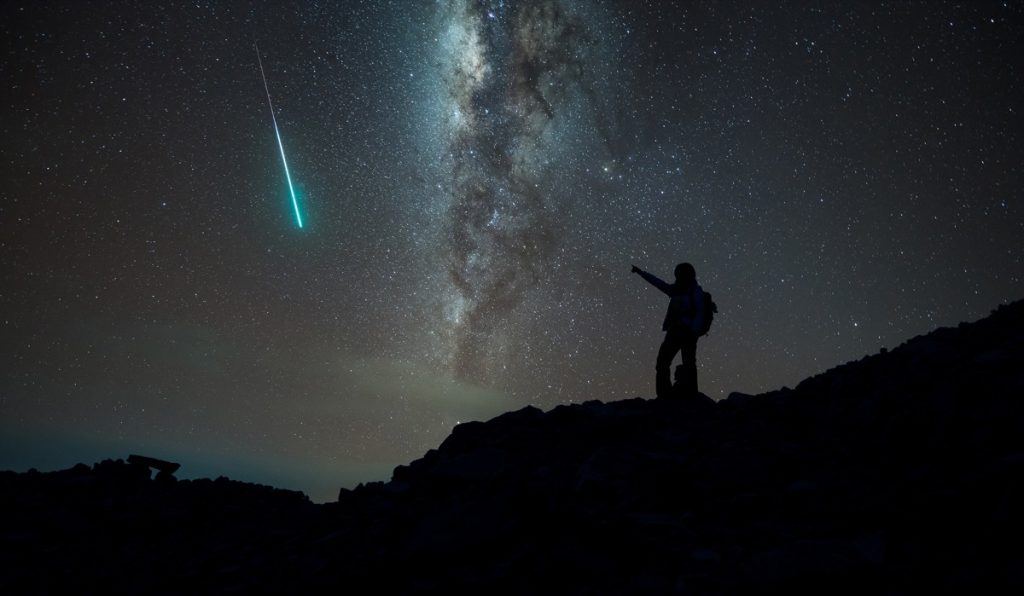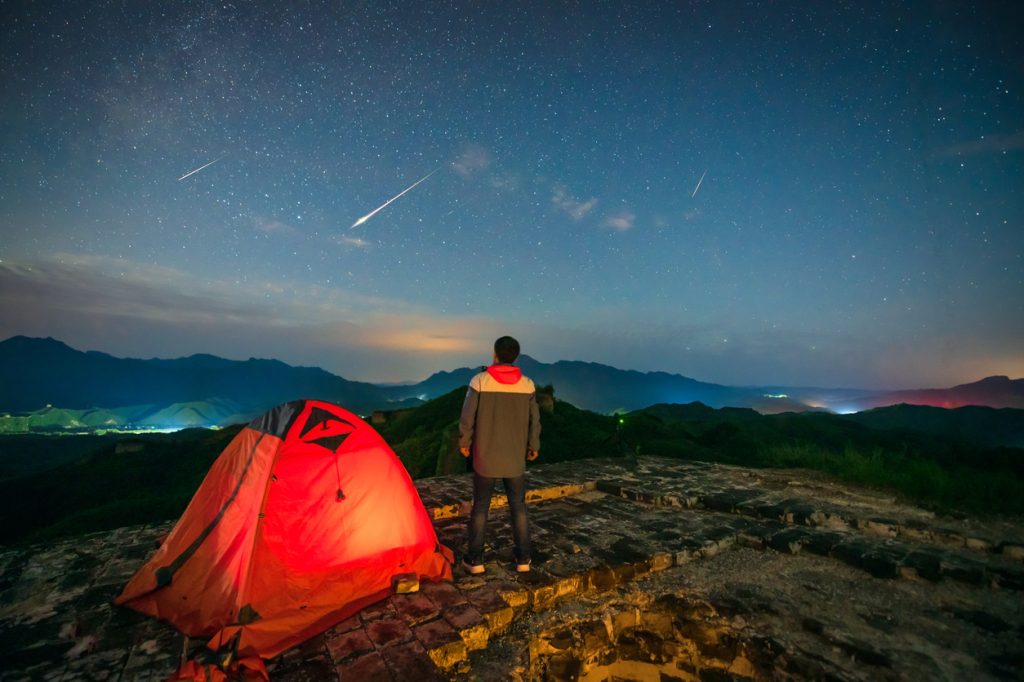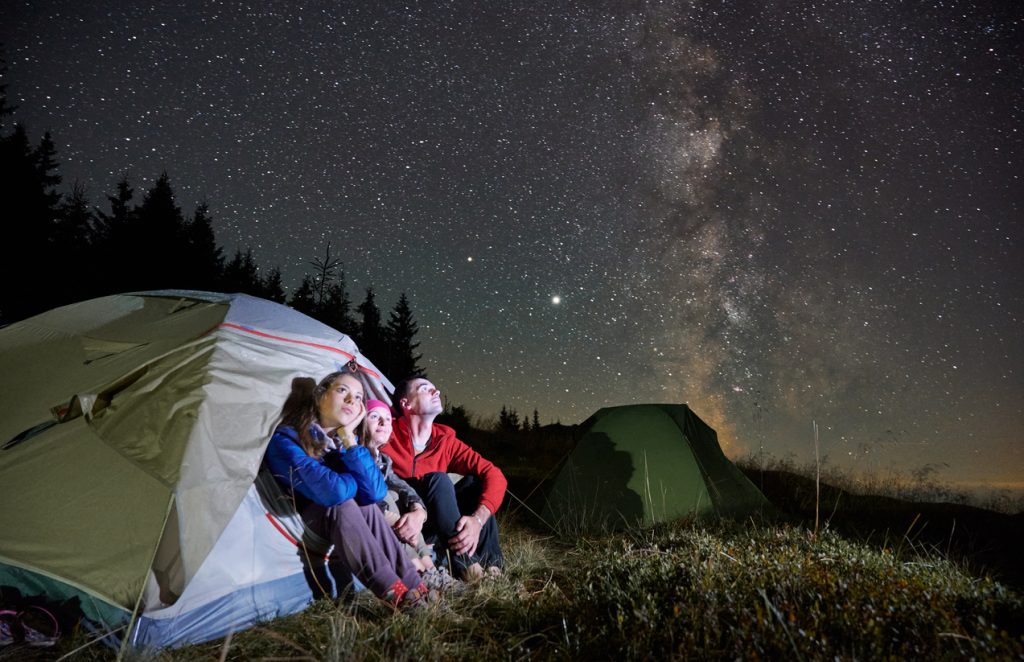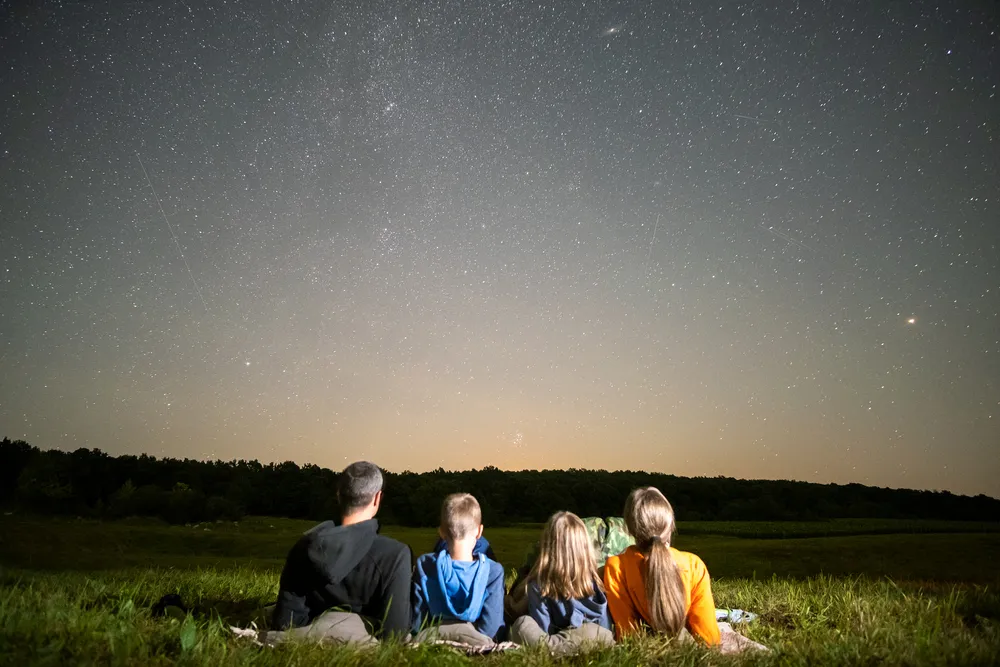"Striking Meteors" Will Light Up the Sky This Weekend—How to See Them
History has shown that the Draconid Shower could put on a bigger show than expected.

Summer may be over, but there's still something special about outdoor activities in autumn—especially stargazing. In fact, this season has plenty of milestone events in store, including an annular solar eclipse that will create a ring of fire in the sky. And even though we may be between the two biggest opportunities for "shooting stars," this weekend will see "striking meteors" light up the sky as the Draconids hit their peak. Read on for tips on how to see them and when will be the best time to step outside.
RELATED: Upcoming Solar Eclipse Prompts Safety Warning from Experts.
The Draconid meteor shower will be on full display this weekend.

While most casual stargazers have the Perseid and Leonid meteor showers marked on their calendars, they're far from the only opportunities to catch a few falling stars. That includes the Draconid shower, which will create "striking meteors" in the sky this weekend, according to NASA.
Like other meteor showers, the Draconids are created by Earth passing through the dust trail left behind by Comet 21P/Giacobini-Zinner which orbits past our planet about every 6.6 years. It gets its name from the astronomer Michel Giacobini—who first spotted it from the Nice Observatory in France in 1900—and from Ernst Zinner, who "rediscovered" the comet 13 years later, per NASA.
RELATED: The 10 Best Destinations for Stargazing in the U.S.
This shower has been known to produce "meteor storms" with thousands of shooting stars.

Even if you're a somewhat regular stargazer, there's a decent chance you're not familiar with the Draconids. The meteor shower is relatively slow compared to most others, typically producing an average of about 10 visible meteors per hour under pristine visibility conditions, according to astronomy website EarthSky.
However, this isn't always the case. During years when the Earth swings just inside the comet's path after it has recently passed, resulting "meteor storms" can create a spectacle in the sky, Space.com reports. The most notable occurred in 1933 and 1946 when thousands of meteors were observed from Europe during the Draconids peak, while over 600 were counted more recently in 2011.
Since the comet last passed nearest to Earth in 2018, astronomers aren't holding out for the biggest show. However, they maintain that increased activity is still possible, per EarthSky.
RELATED: 8 Amazing Things You Can See in the Night Sky Without a Telescope.
You won't have to stay up very late to catch the Draconids at their peak.

This year's shower is set to peak on the evening of Oct. 8. But while they may not show out in full force every year, the Draconids do stand out in one other convenient way. Their "radiant" constellation Draco—which gives them their name—is high in the sky right after sundown, meaning they'll be most active well before midnight, according to EarthSky.
And while local weather conditions can always change, the overall forecast is particularly good for viewers this year. The moon will be in a waning crescent phase and only 19 percent illuminated, cutting down on brightness that can otherwise drown out visibility.
If your local weather isn't cooperating, you'll still have an opportunity to see Draconids. Astronomers say visible meteors will likely begin on Oct. 6 and will continue through Oct. 10, Space.com reports.
RELATED: Intense Solar Storms May Peak Faster Than Expected—What That Means for Earth.
Here's how to optimize the meteor-watching experience.

Since you likely won't have to set any alarms or stay up late to catch them, getting ready to watch the Draconids might be less complicated than some other more notable showers. As with any stargazing experience, it's best to find a spot that's as dark as possible, away from city and street lights that can drown out the sky, according to Space.com.
Binoculars or a telescope won't be necessary to catch sight of meteors. Still, the increasingly chilly fall nighttime weather means you'll want to pack comfortable clothing, a blanket, or a hot beverage to help stay warm. Besides that, the only gear you'll need is a comfortable chair or blanket that allows you to lay out on your back and look up at the sky, says Space.com.
Once you've found the perfect spot, be sure to give yourself up to 30 minutes for your eyes to adjust to the darkness. Consider picking up a flashlight with a red setting if you want to be able to find your way around without ruining your night vision.
RELATED: For more up-to-date information, sign up for our daily newsletter.





















